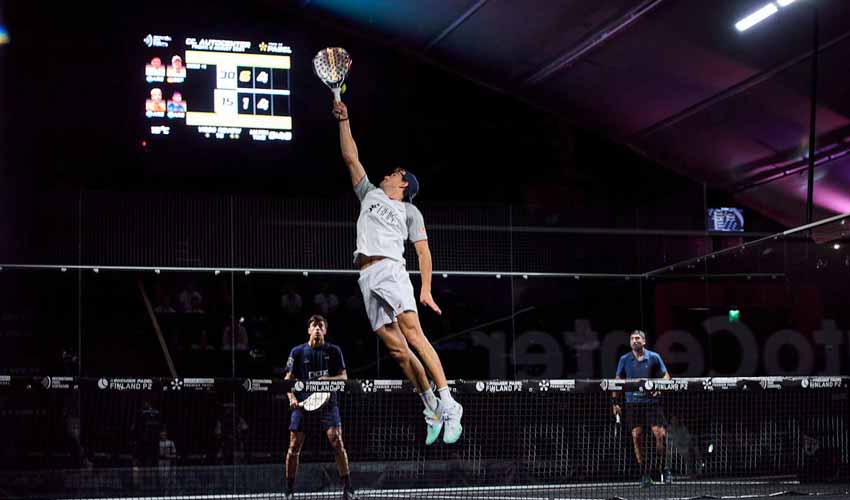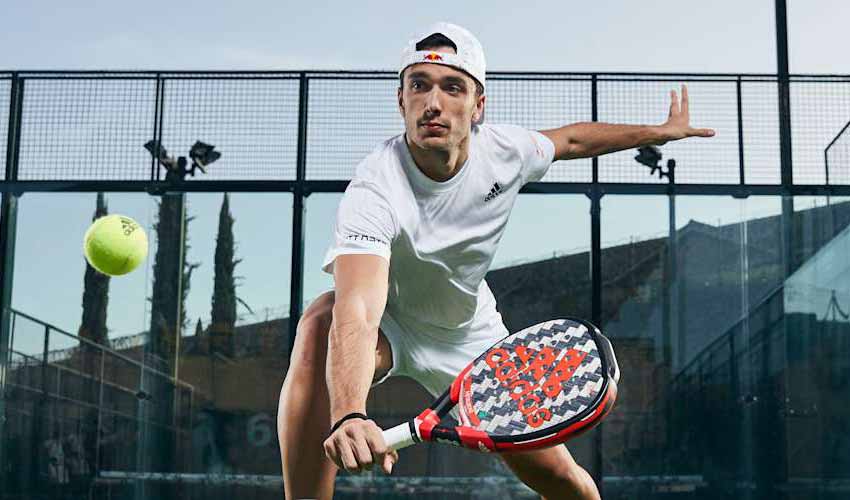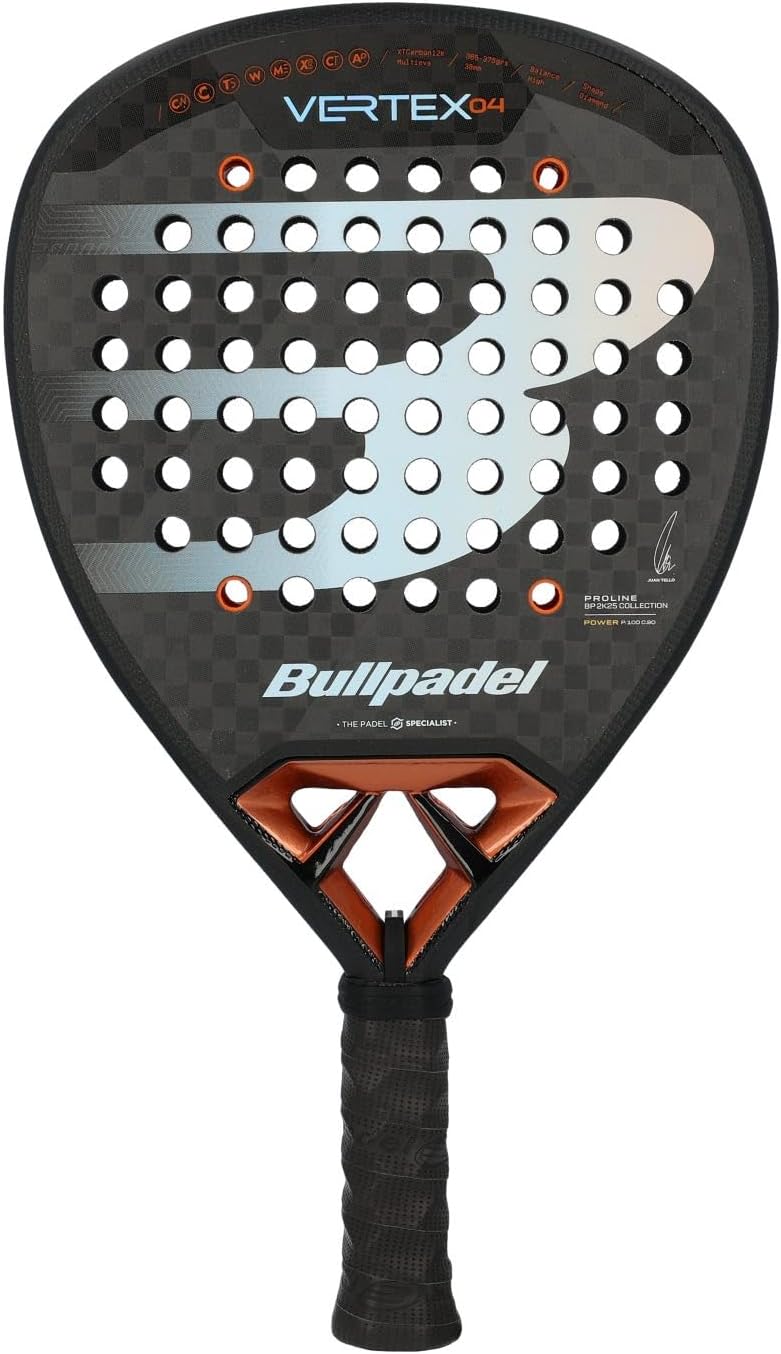The Padel Backhand is one of the most important shots in the game, and a lot of players have difficulty hitting it with power and consistently. No matter whether you are a novice or an advanced player,… honing that backhand, is crucial to your performance on the court. In this guide, we’re going to dissect the backhand, look at the types of backhands, common mistakes, and how you can play perfect shots just like the pro’s.
The padel backhand is a shot that is a great feature of many players’ game and can make a big difference to your game. Padel as a sport that is a cross between tennis and squash, requires fast reflexes, accurate shot-making and tactical play. One of the different shots in padel that are generally underrated, but very important in defence (and offence) is the backhand.
From returning a deep shot to getting into a long rally, to making a volley at the net, a reliable backhand can add much needed versatility and power to your game. A well-hit backhand shot helps players to stay balanced, move all over the court, and return shots hit to their weaker side. For right-handers, that’s shots on the left side of the court, for left-handers shots on the right.
It is not just power that is needed to master the backhand but precision, the correct technique, and an understanding of grip, footwork, foot position, and follow-through. The backhand is crucial in padel. A powerful backhand helps you attack better and can be used for playing offensive shots like volleys at the net or drop shots.
A weak backhand can quickly become a target for opponents, making it crucial to develop this shot to avoid being exploited during matches.

How to Execute the Perfect Padel Backhand
1. Grip and Stance
Most players use a continental grip (hammer grip) for better control and adaptability. Your stance should be side-on, with knees slightly bent and weight balanced.
2. Backswing and Preparation
- Keep the paddle high and close to your body for better reaction time.
- Rotate your shoulders to generate power.
- Avoid excessive backswing – padel is about quick, compact movements.
3. Contact Point
- Hit the ball in front of your body, slightly below waist height.
- Keep your wrist firm to maintain control.
- Follow through towards your target for accuracy.
4. Footwork and Recovery
After hitting the shot, recover quickly to a central position. Good footwork ensures you’re ready for the next ball.
Adjusting Stance Based on Ball Height and Position
Adapting your stance to the ball’s height and position is essential for executing a consistent and effective backhand. While previous content has addressed general stances, this section emphasizes situational adjustments to enhance shot versatility.
1. Low Balls
For balls traveling close to the ground, adopt a wider stance with knees deeply bent. Lower your center of gravity to maintain stability and ensure clean contact with the ball. The non-dominant foot should remain slightly forward, allowing for a compact swing path. This adjustment is particularly useful when returning low slices or drop shots.
2. High Balls
When dealing with high balls, position your feet slightly closer together and stand more upright. This stance enables better reach and control over the shot. Use your non-dominant hand for additional stability and guide the racket to meet the ball at its peak.
3. Wide Balls
For balls hit towards the corners, prioritize lateral movement. Take quick side steps or a crossover step to position yourself effectively. Maintain a balanced stance by keeping your weight centered over your feet, even when reaching for wide shots.
Practicing these stance variations through targeted drills, such as cross-court backhand rallies or ball machine exercises, will improve your adaptability.

Enhancing Reaction Time and Court Coverage
Reaction time and court coverage are pivotal for executing a successful backhand under varying match conditions. This section focuses on improving these aspects through specific exercises and strategies.
1. Reaction Time
To improve your reaction speed, incorporate split-step drills into your training. Begin by standing in a neutral position and perform a split step as your opponent strikes the ball. This prepares your body for quick directional changes. Reaction ball drills, where a coach or partner randomly feeds balls, can also sharpen your reflexes.
2. Court Coverage
Efficient court coverage relies on minimizing unnecessary movements. Focus on maintaining a low, balanced stance and using short, quick steps to adjust your positioning. Avoid crossing your feet unless executing a crossover step for wide balls. Ladder drills and shadow movements are excellent for developing court coverage skills.
Timing the Swing for Optimal Contact
This section focuses on timing, a critical yet often overlooked element of the padel backhand. Unlike the general advice on footwork and positioning, this section emphasizes the importance of hitting the ball at the ideal contact point. Poor timing can lead to mishits, weak shots, or loss of control.
To improve timing, players should focus on the following:
- Early Preparation: Begin the backhand swing as soon as the ball is approaching. Keep the racket head up and prepare to meet the ball at the right height.
- Contact Point: Aim to hit the ball slightly in front of your body. This ensures maximum control and power.
- Follow-Through: Extend your racket towards the target after contact to maintain accuracy and depth.
Drills such as shadow swings and ball machine exercises can help players develop a consistent rhythm.
Adapting to Ball Speed and Spin
While existing content discusses stance adjustments for ball height, this section focuses on adapting to variations in ball speed and spin. Players often struggle with backhand returns against fast-paced or heavily spun balls, leading to poor shot execution.
To counteract this, players should:
- Read the Ball Early: Observe the opponent’s racket angle and swing to anticipate the ball’s speed and spin.
- Adjust Swing Speed: For faster balls, shorten the backswing to maintain control. For slower, spun balls, use a longer swing to generate power.
- Use the Body: Engage your core and shoulders to stabilize the racket against high-speed shots.
A practical drill involves having a partner vary the speed and spin of their shots during a rally. This forces the player to adapt dynamically, improving their reaction time and shot selection.
Common Padel Backhand Mistakes (And How to Fix Them)
1. Poor Grip Choice
Using a tennis-style grip (e.g., Eastern or Western) can lead to inconsistency. Stick to the continental grip for better adaptability.
2. Late Preparation
Many players react too late, leading to weak shots. Anticipate the ball early and prepare your paddle in advance.
3. Overhitting
Padel is about control, not power. Focus on placement rather than smashing every backhand.
4. Lack of Follow-Through
A short, abrupt swing reduces power and accuracy. Extend your arm naturally towards the target.
5. Wrong Body Positioning
Facing the net directly limits rotation. Stay side-on to maximize power and control.

Should You Use a One-Handed or Two-Handed Backhand?
This depends on your playing style:
- One-Handed Backhand – Offers more reach and versatility, especially for slices and lobs.
- Two-Handed Backhand – Provides more stability and power, great for baseline drives.
Many players switch between both depending on the situation. Experiment to see what works best for you.
Drills to Improve Your Padel Backhand
- Wall Practice – Hit against a wall to improve reaction time and consistency.
- Cross-Court Backhands – Focus on placing the ball deep into the opponent’s corner.
- Defensive Lob Drills – Practice lifting the ball high to reset difficult points.
Recommended Padel Rackets for Better Backhand Control
If you’re looking to upgrade your gear, consider rackets with:
- Soft to medium-soft core (for better control).
- Tear-shaped or round shape (larger sweet spot).
- Carbon or fiberglass face (durability and touch).
Top Choices for Backhand
- NOX ML10 Pro Cup (Great for control and power)
- Adidas Metalbone 3.4 (Excellent for aggressive players)
- Bullpadel Vertex 04 (Balanced performance)
Final Thoughts
Mastering the padel backhand takes practice, but with the right technique and mindset, you’ll see rapid improvement.
Focus on control, footwork, and grip, and avoid common mistakes like overhitting or late preparation. Whether you prefer a one-handed or two-handed backhand, consistency is key.
Now, get on the court, practice these tips, and watch your backhand become a weapon in your padel arsenal!
Do you want to improve your Padel Game Plan? For additional insight of the sport and any Padel advice, keep your eyes peeled at PadelGamePlan.com!
FAQ – PADEL IMPROVEMENT
How to get better at padel?
You will need regular practice, hit on the walls and watch matches of professionals. Read this Article – How to play Padel Tennis.
How can I improve my Service?
For more information on Padel Service, please read the Article – Best Padel Serve Techniques
Can I know more about the Rules of Padel Tennis?
Absolutely, for a beginner-friendly explanation of the Rules of Padel Tennis, please have a look at the Article – Rules of Padel Tennis. For Official Rules, please download the official rules of Internatlonal Padel Federation here.
FAQ – PADEL FOR CHILDREN
At what age should children start Padel Tennis for children?
Children as young as 4 can start out with foam balls and mini-rackets. The majority of clubs are for ages 5–15.
How does padel improve teamwork in kids?
Doubles requires constant communication and mutual strategies; collaboration is natural.
Can padel help academically?
Doubles requires constant communication and mutual strategies; collaboration is natural.
What is a good reason why padel is safer than tennis for little kids?
Enclosed courts, slower balls, and lighter gear reduce injury risks significantly.
Is there any competitive padel opportunity for kids?
Absolutely! Try to look for Junior leagues that offer Padel tournaments for under-12 and teen divisions. the positive impact of padel tennis on children
FAQ – PADEL EQUIPMENT
Do I need special padel tennis attire?
Please read the Article – Top Padel Clothing Essentials.
Do you have a checklist of padel tennis essentials I’ll need?
Could you recommend which padel balls I should use?
Please read the Article – Best Padel Balls.
Planning a Padel Tournament?
Use our Free Tool and get the schedule in seconds.
FAQ – PADEL TENNIS COURT
Is it possible to erect a padel court in my garden?
Installation is possible with a minimum area of 10m × 20m, subject to local zoning approval. For more information, Read this Article.
How much the cost of a padel court?
A typical padel court can range from AED 335,000 to AED 1,113,000, depending on materials, location and amenities. See the full cost breakdown here: Article – How much does it cost to build a padel court.
What about lighting required for the padel court – what advice can you give on that?
Please have a read through on the Article – Essential Padel Lighting Tips.










One Response